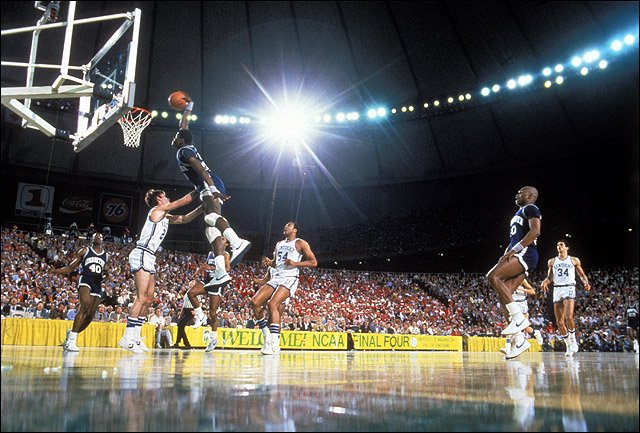
For Rich Clarkson, March Madness isn’t about filling out a bracket. It’s about filling up his viewfinder.
This weekend, the Denver photojournalist will attend his 60th Final Four, shooting for the NCAA and Sports Illustrated. He's worked with the latter since he was a student at the University of Kansas. Over his long career, he has also photographed the Olympics for Life magazine and managed photo departments at National Geographic and The Denver Post.
Clarkson has worked many notable events outside of sports, as well. In 1960, he was assigned to cover a murder trial in Kansas -- the same one being covered by Truman Capote and his assistant Harper Lee, who turned it into the 1966 thriller, "In Cold Blood."
Clarkson says this weekend will not be his last Final Four, but it's the last time he will sit on the floor to take pictures during the game. That's in part because he's now in his 80s, as he tells Colorado Matters host Ryan Warner.
"At halftime, and at the end of the game, I've been sitting cross-legged on the baseline for all that time," he says. "The most difficult thing for me is getting up."
One of Clarkson's first jobs was photographing basketball for the University of Kansas as a student where he traveled with the team and photographed a young Wilt Chamberlain.
At an even younger age, Clarkson and other boys growing up in Lawrence, Kan., snuck into the university gym during a practice, and ended up meeting James Naismith, the man who invented basketball.
This Monday during the men's basketball championship game, Clarkson plans to make his photographs available in real time through a mobile application.
Clarkson on his approach to sports photography
"I've always been more interested in behind-the-scenes than the great slam-bang action. And I've done the action; I have a lot of pretty good action pictures. But I'm more interested in the other kinds things, which I think are more storytelling about the people themselves."
On his picture of former Georgetown player Patrick Ewing, above
"It's the Final Four, and I'm sitting on the baseline with a number of other photographers, and of course this was back in the days of film. So I've been photographing for a while... and all at once, it's late in the first half, and it suddenly occurred to me, 'This is certainly a long roll of film.' Then I thought, 'Oh, that's what I forgot.' And so then I wait for all of the other photographers on the baseline to look the other way, and I pop the back of the camera open and put in the first roll of film. I hadn't been taking any pictures at all. There I was, the Sports Illustrated photographer, with all the big lights, and all of this, and the other young photographers looking at me, saying 'That's the big time.'"
Clarkson says when he sent his photographs to the editor in New York, she commended him on showing discipline in sending only a limited number of pictures to the magazine.
On why he photographed 7-foot-1 Wilt Chamberlain tying his shoes, above
"I think I was a senior at [the University of Kansas] at the time. And they had this picture day at the start of the season in which all the players are there. So here was this brand new player there, who was the hottest recruit in the national that year... I was having Wilt go in and dunk the ball. These were all pretty interesting pictures. Between all of those, he had to stop and go tie his shoes... and I'm looking at him tying his shoes, and his knees were so high, I said to myself, this shows the height better than him dunking the ball. So I said, 'Hold it for a minute.' I moved the chair under the basket where the lights were all set up... That's how I got that picture."
It ended up being Clarkson's first photograph published in Sports Illustrated.
On his advice to young photographers -- professional or amateur
"What you're doing is trying to be a storyteller. So the best advice is to really research what it is you're doing. Know what you're doing. Have something very specific in mind when you go to photograph the person or the event or the situation, to know what you're trying to do. To be open-minded if something else comes along that's amazing and wonderful, but as I tell young photographers all the time, 'Have something to say. Then use the camera.'"









